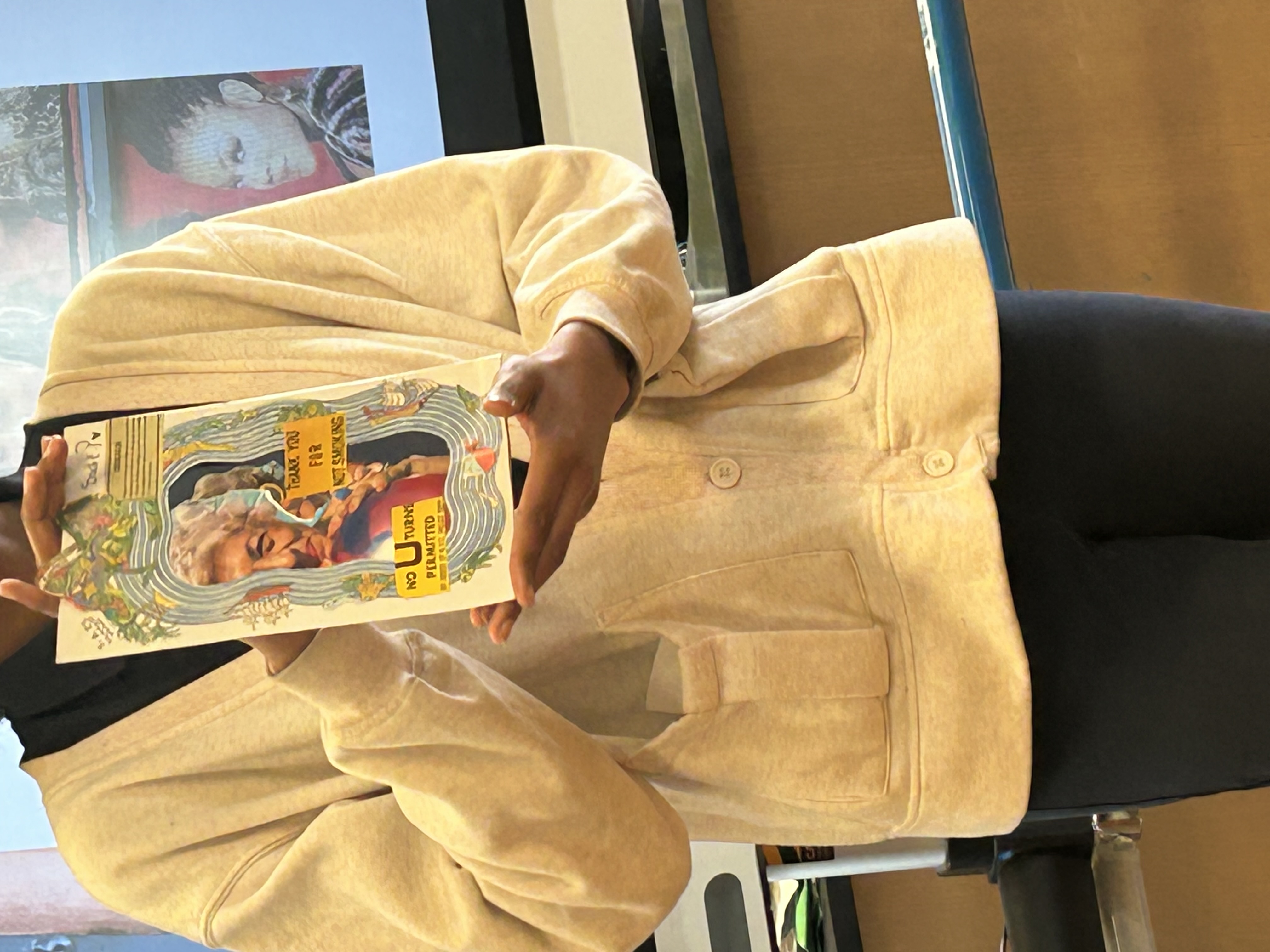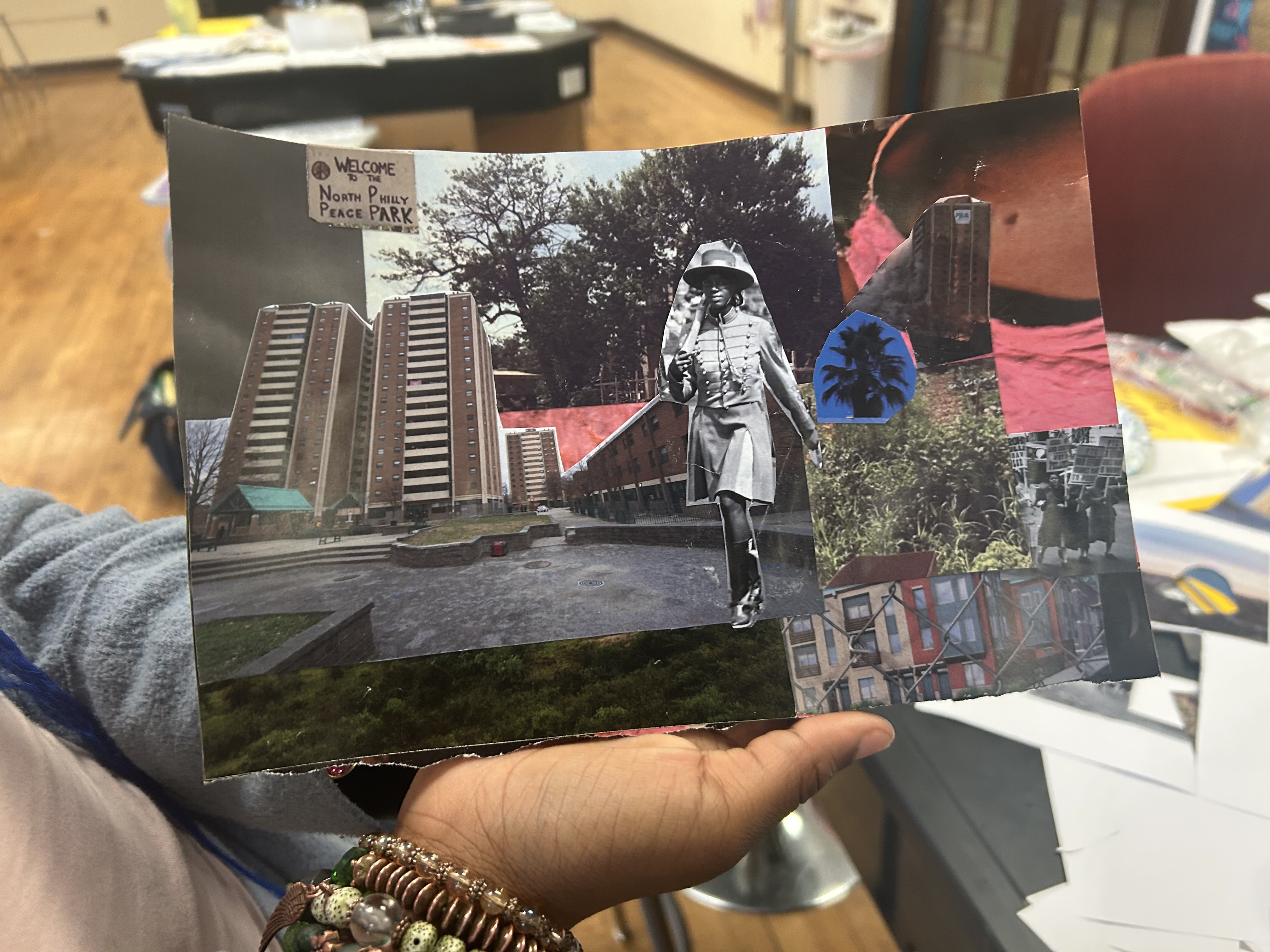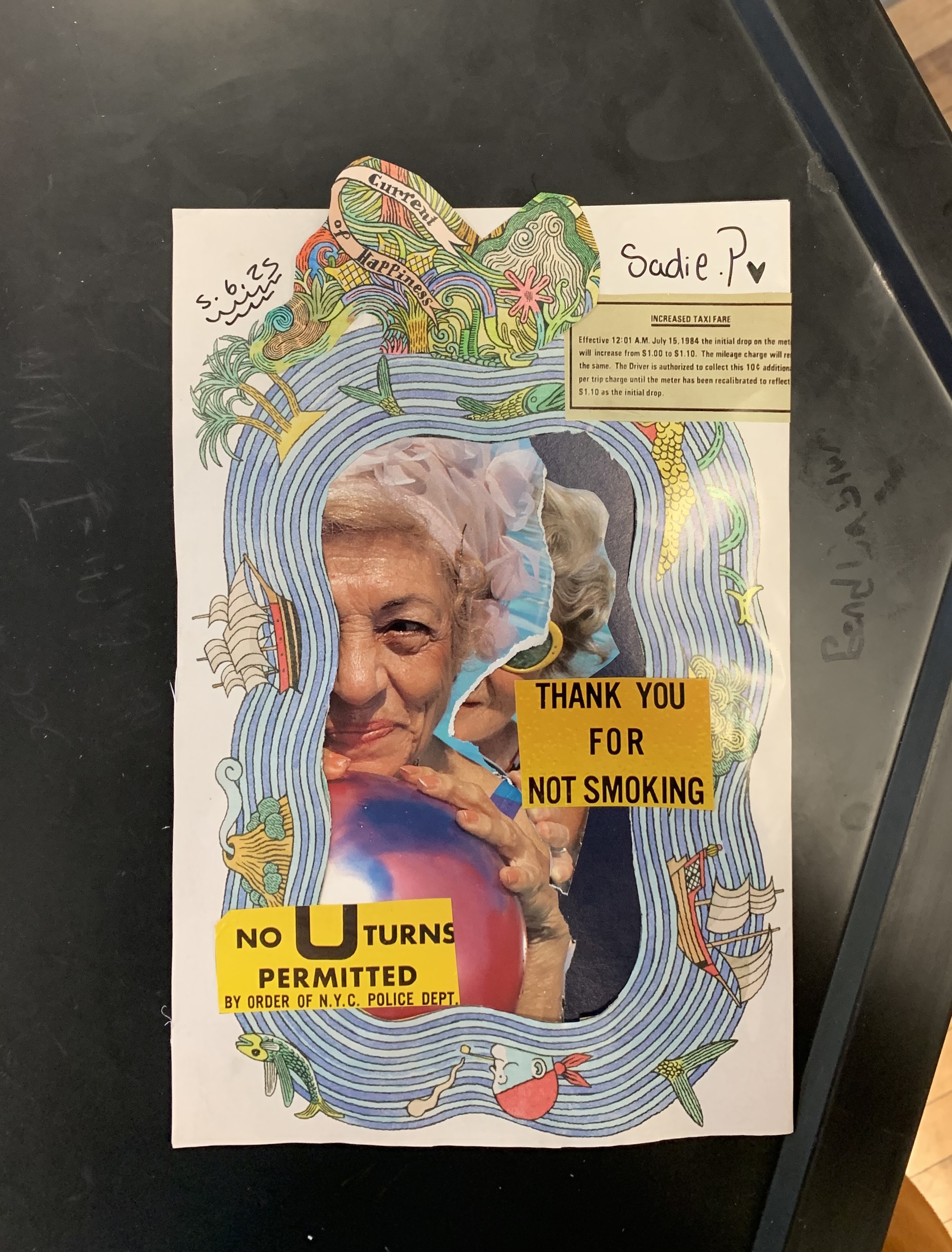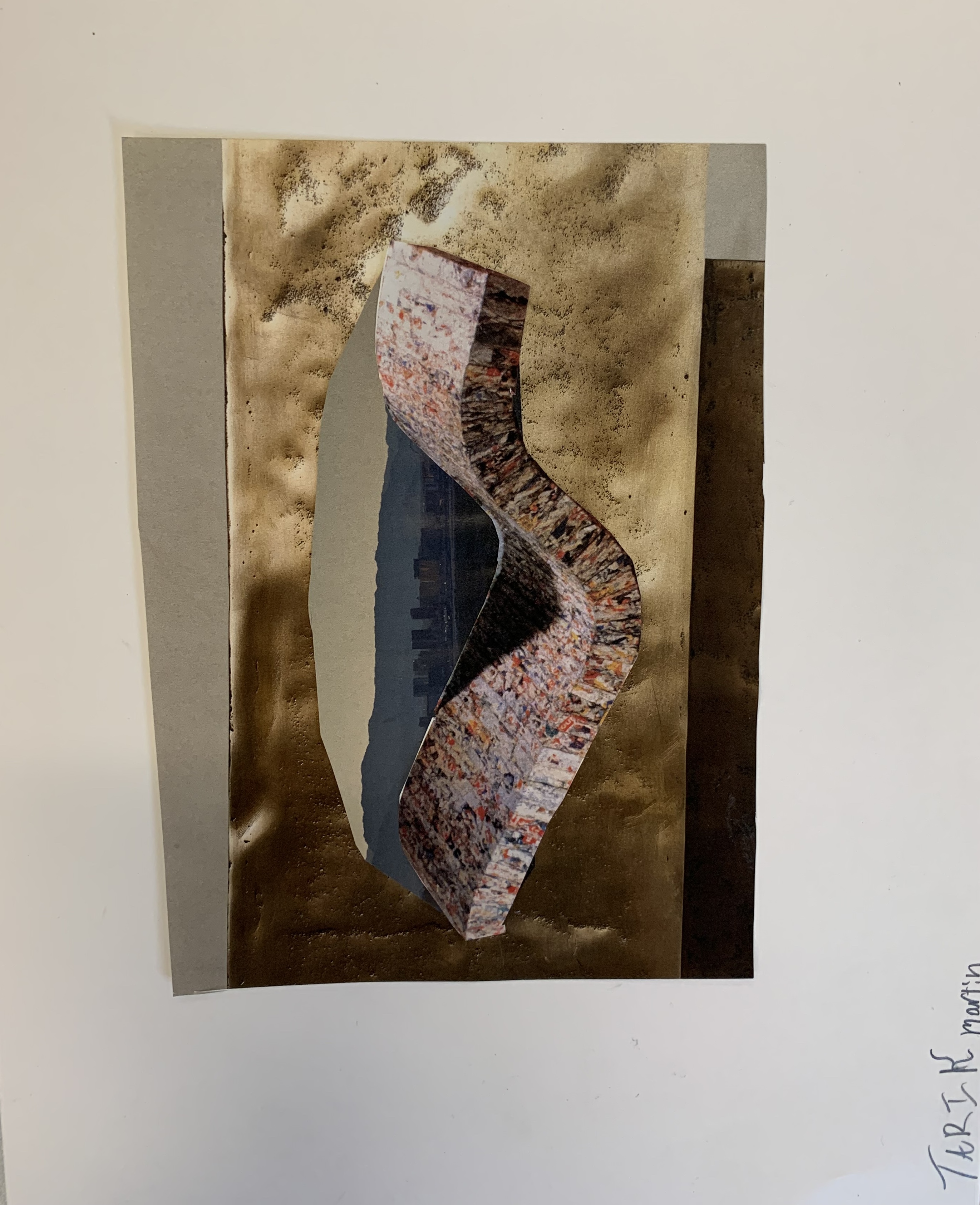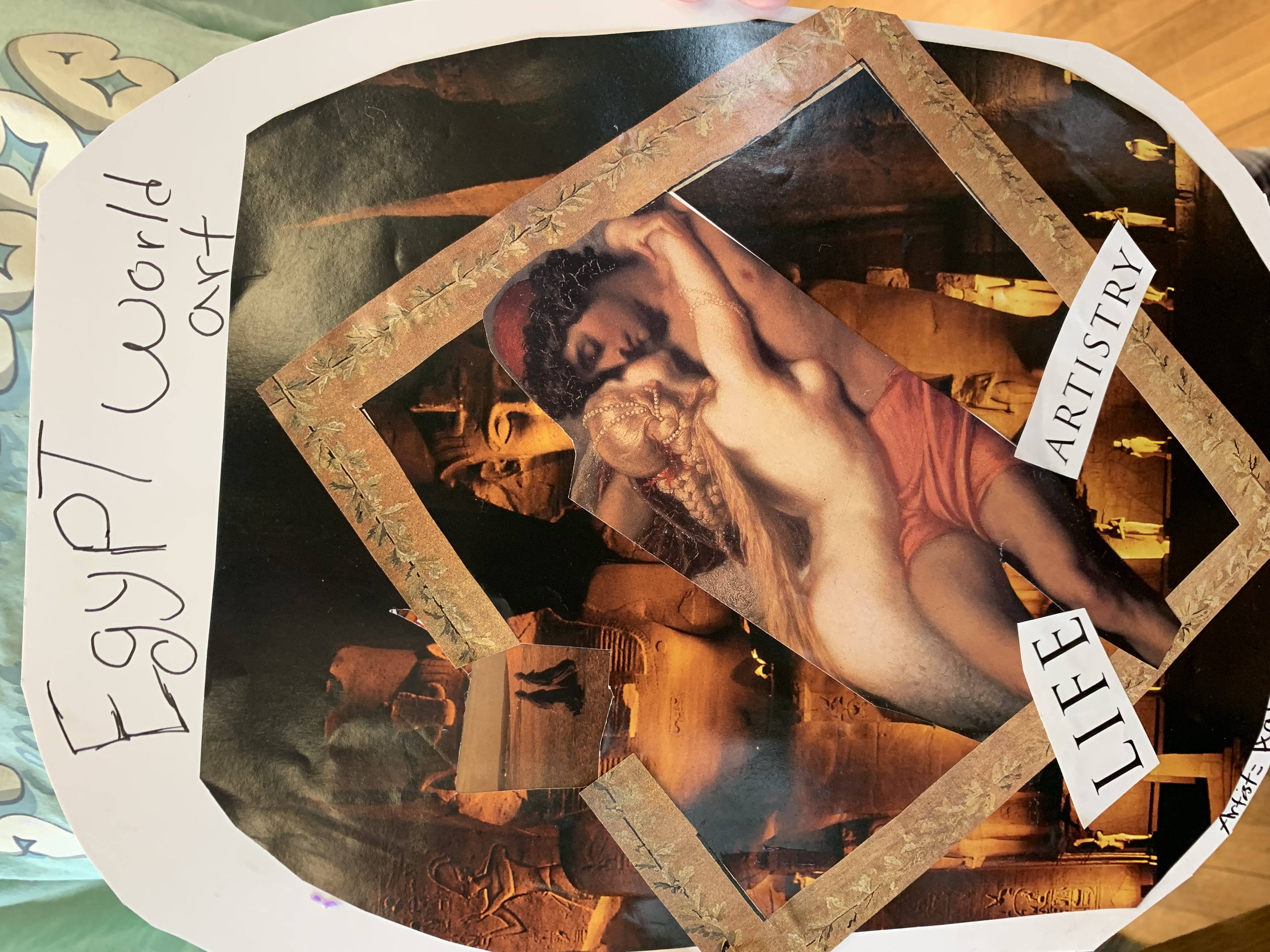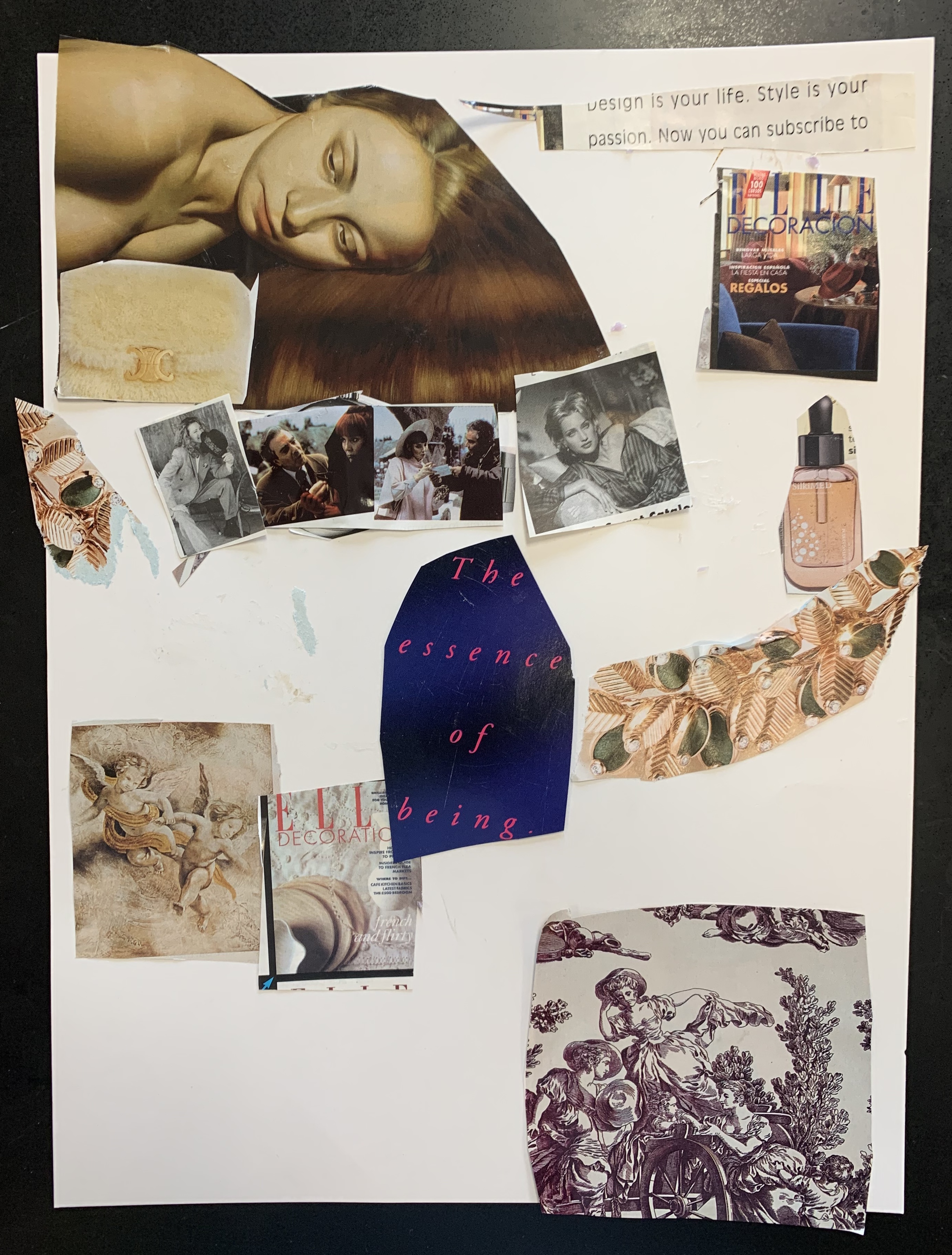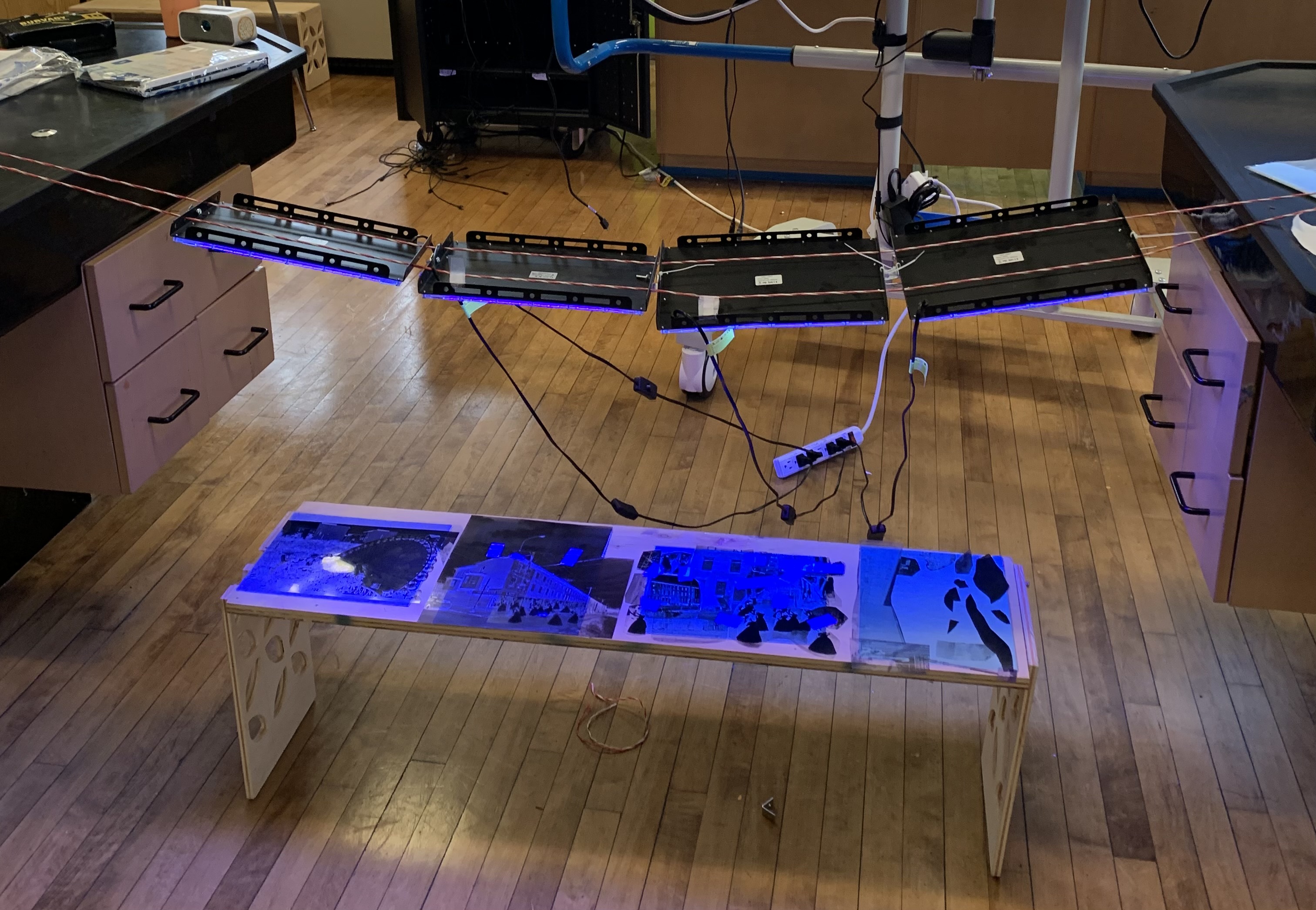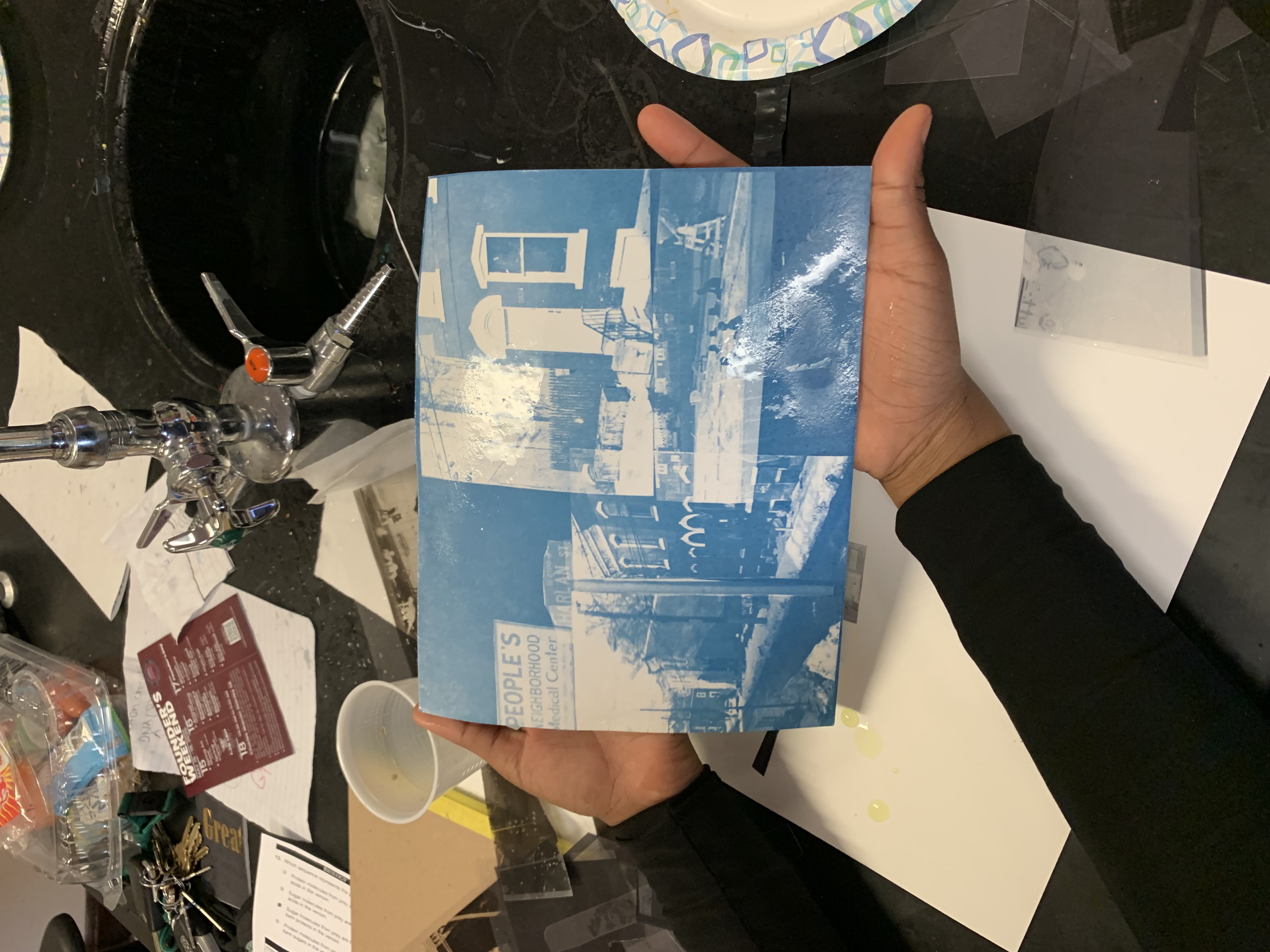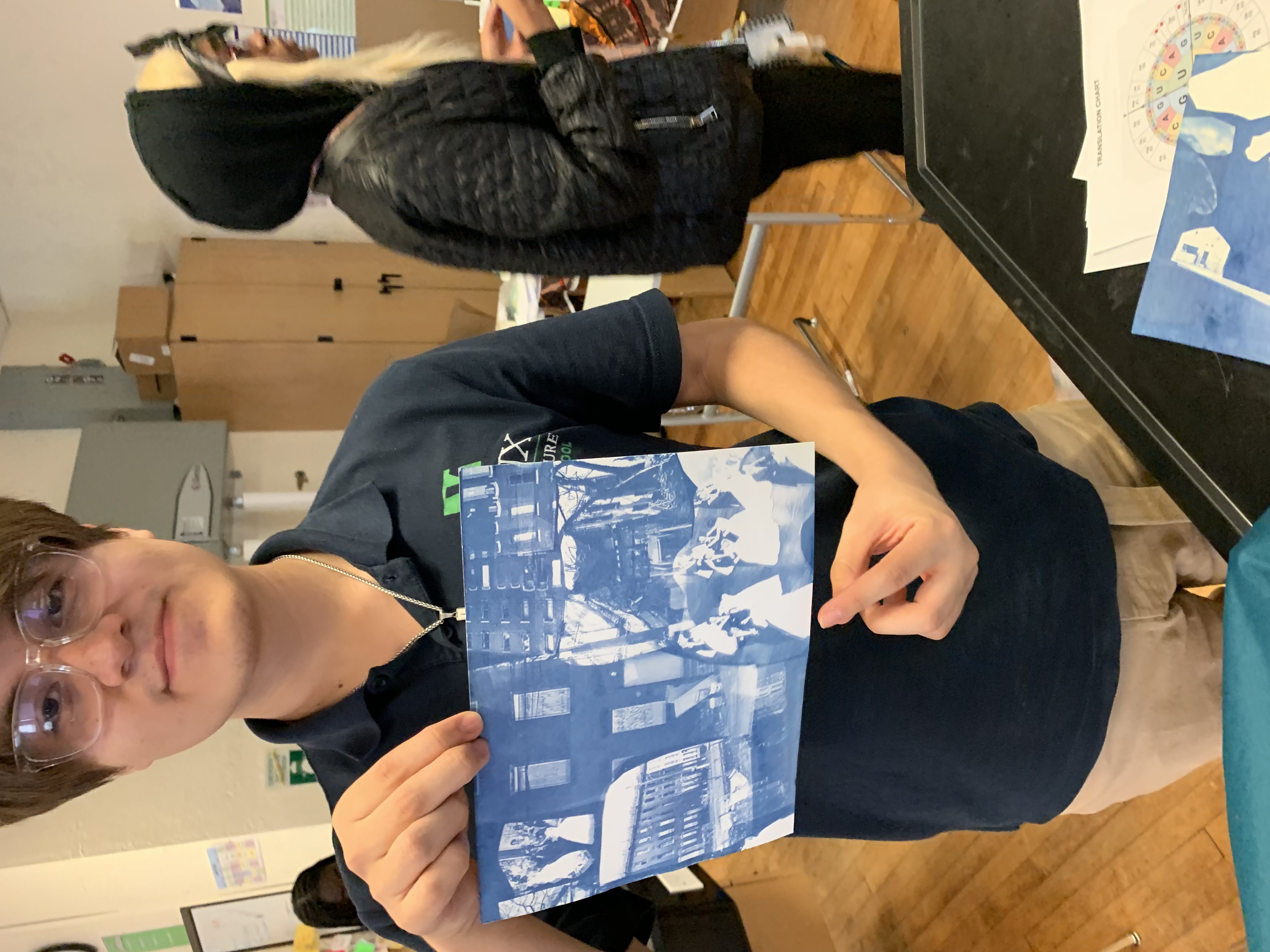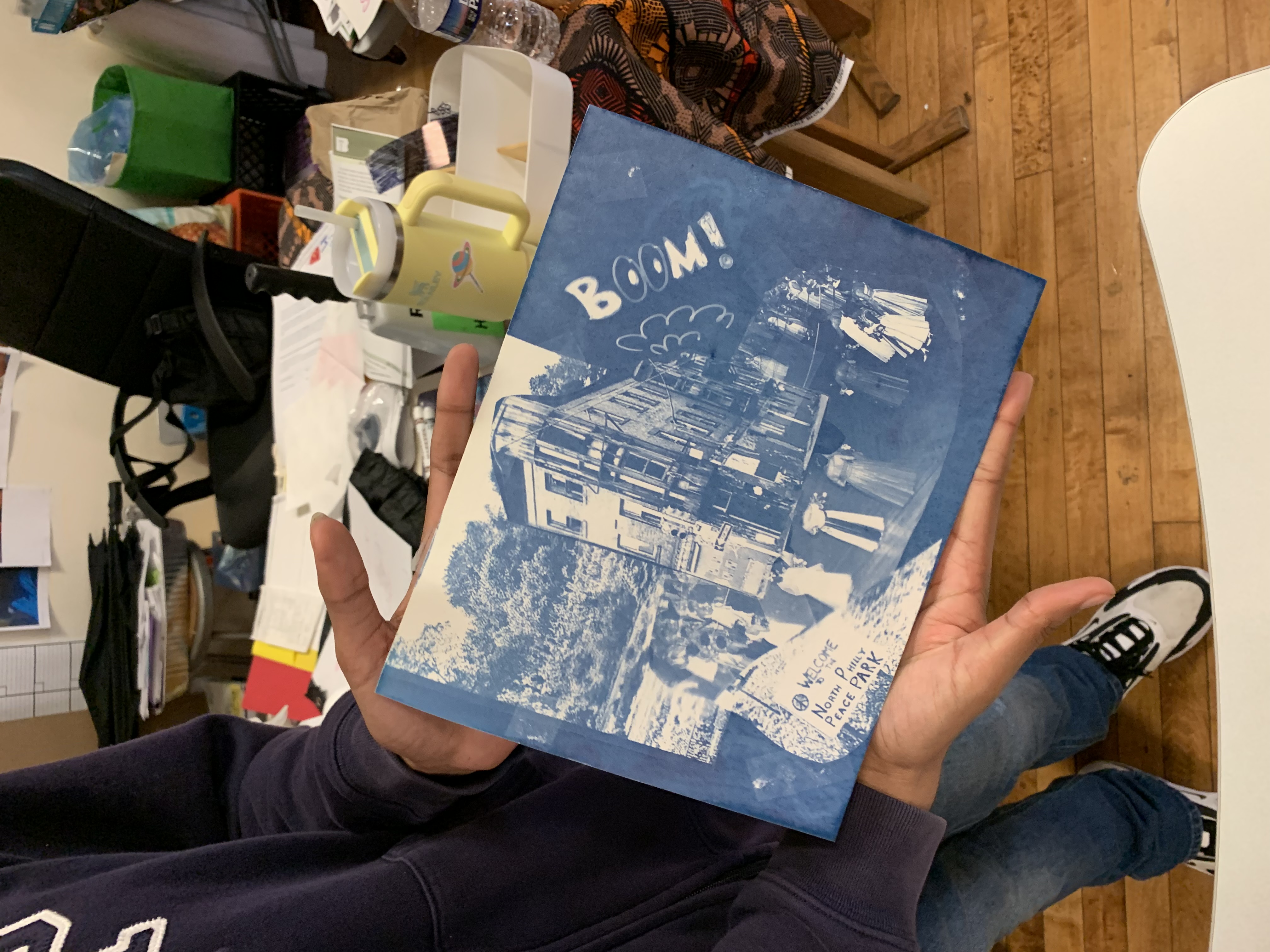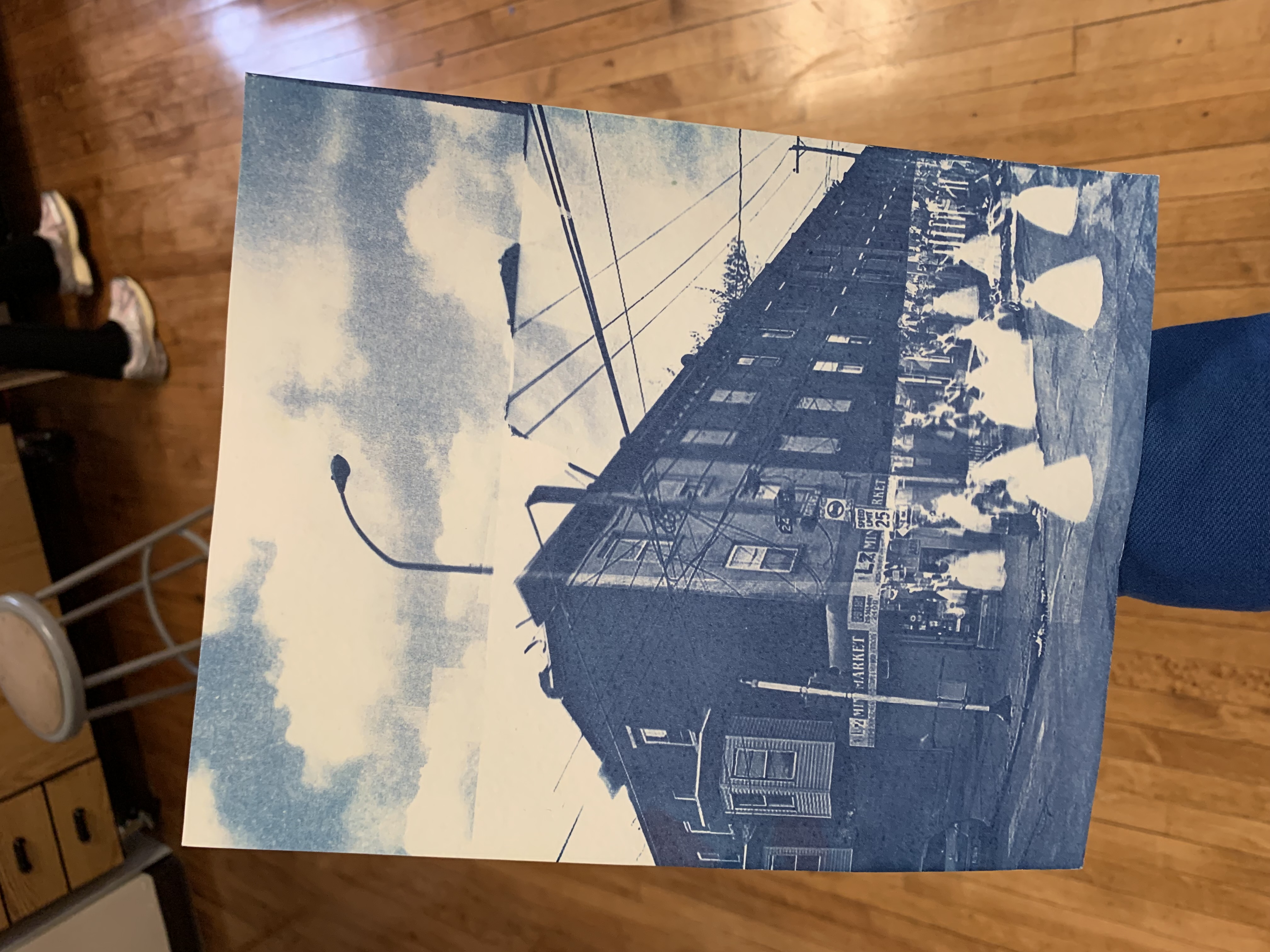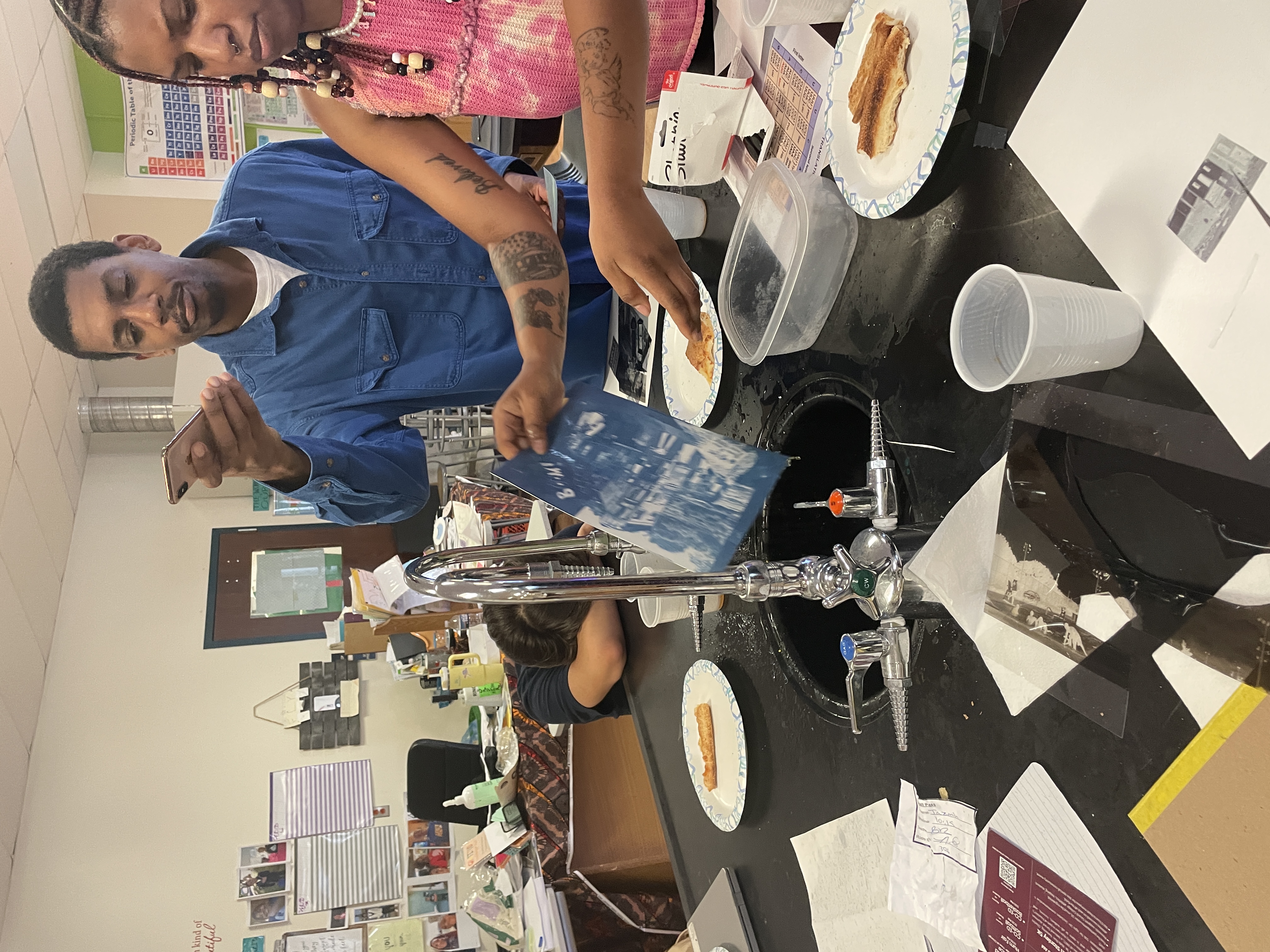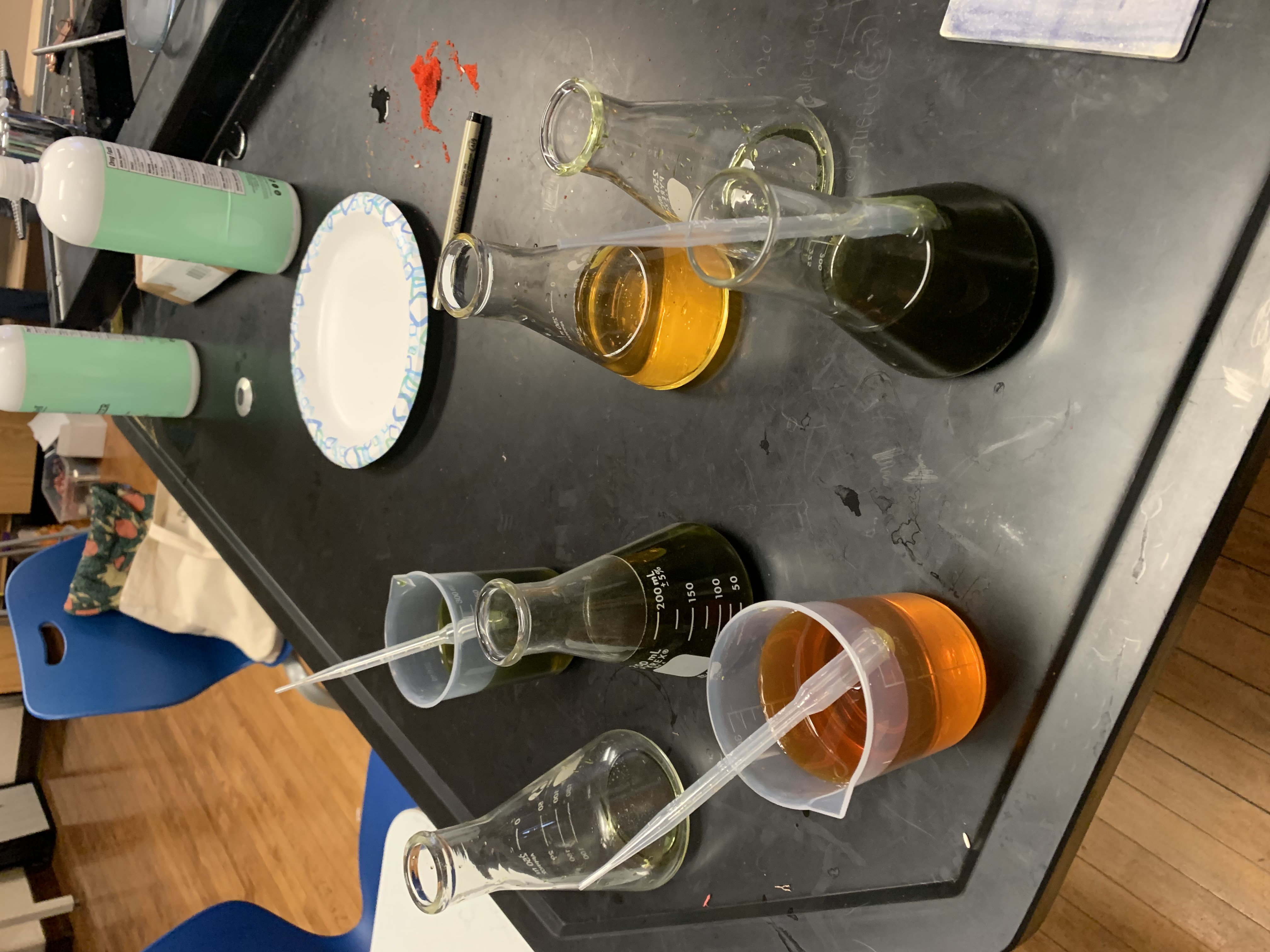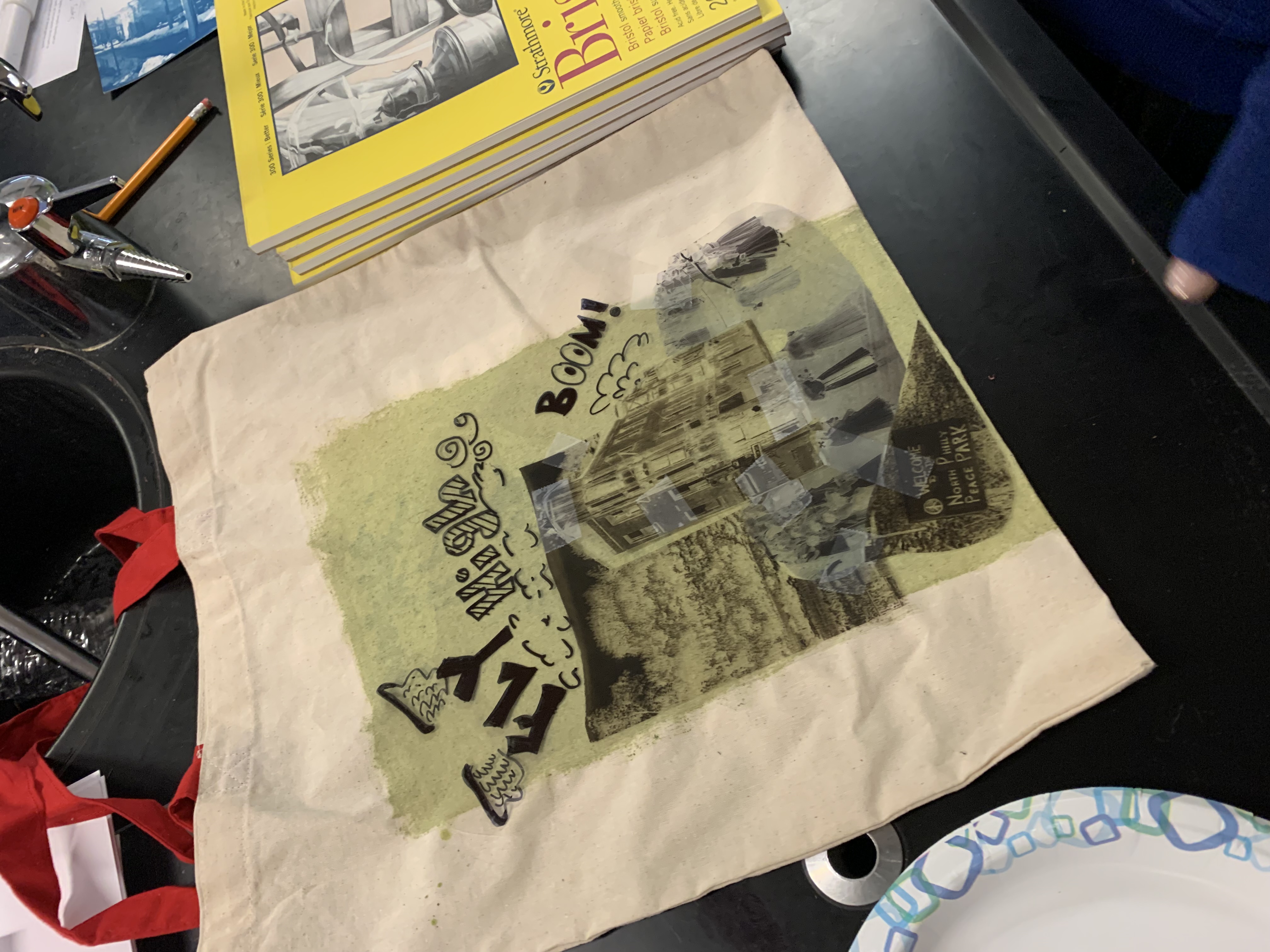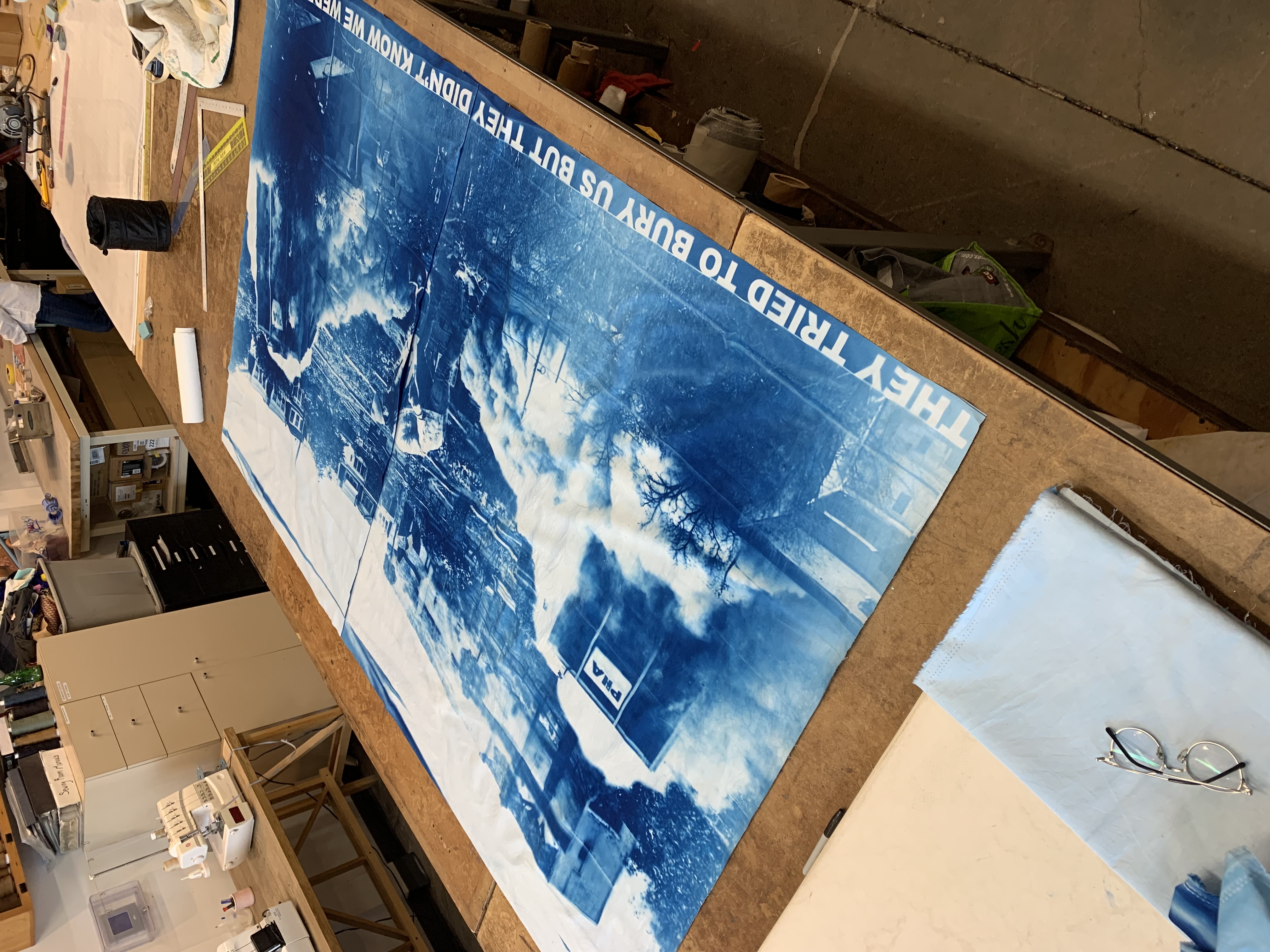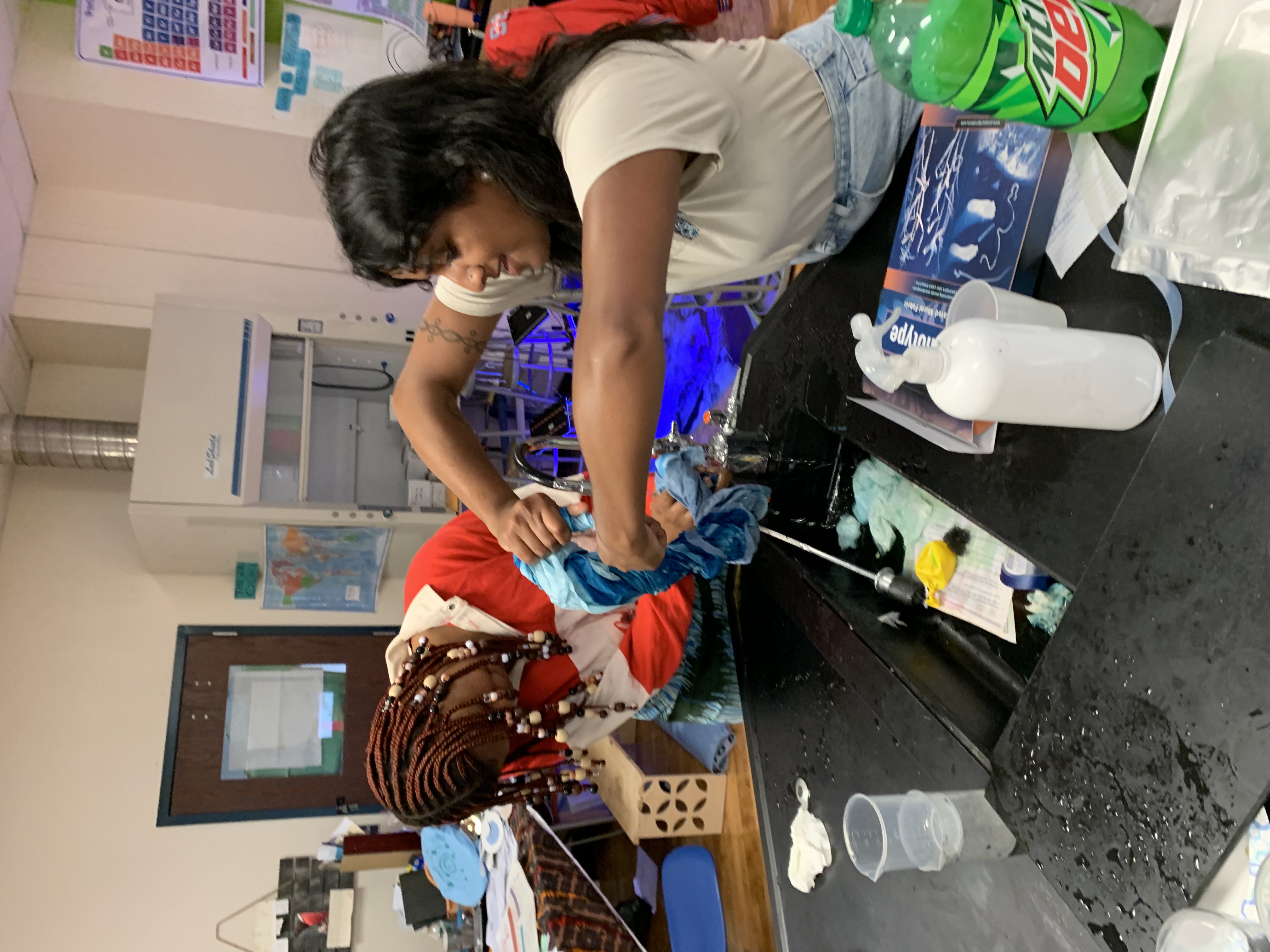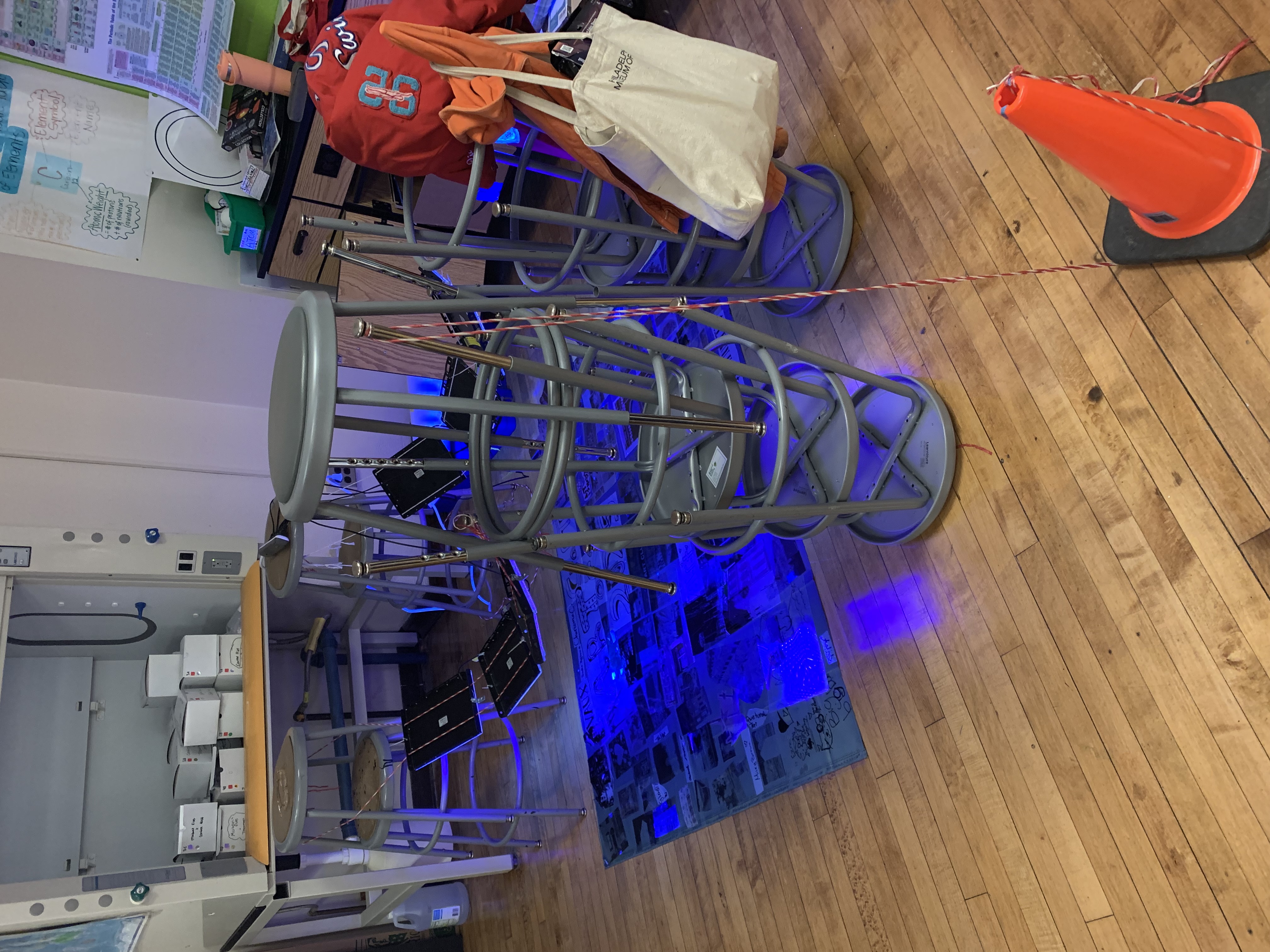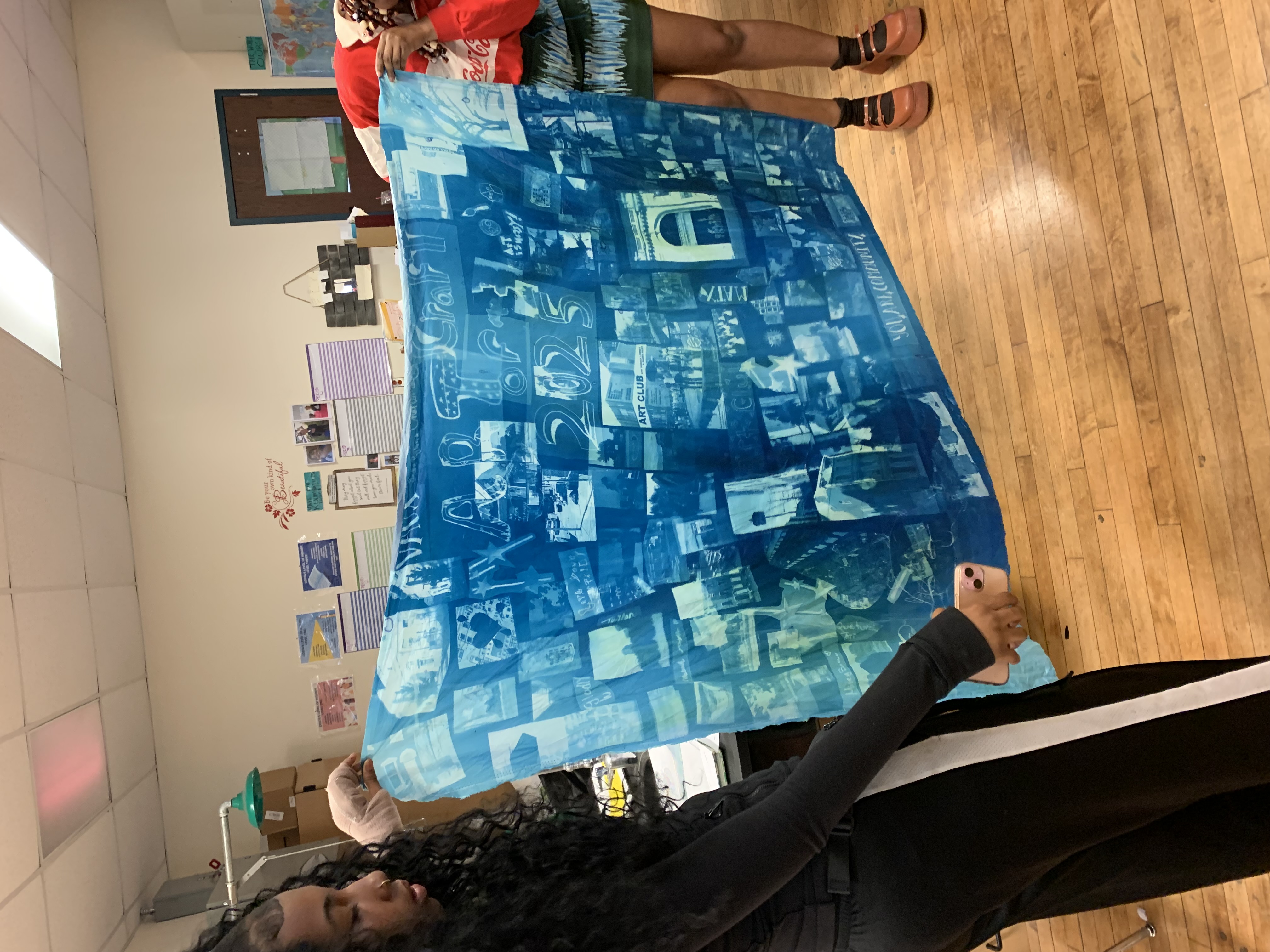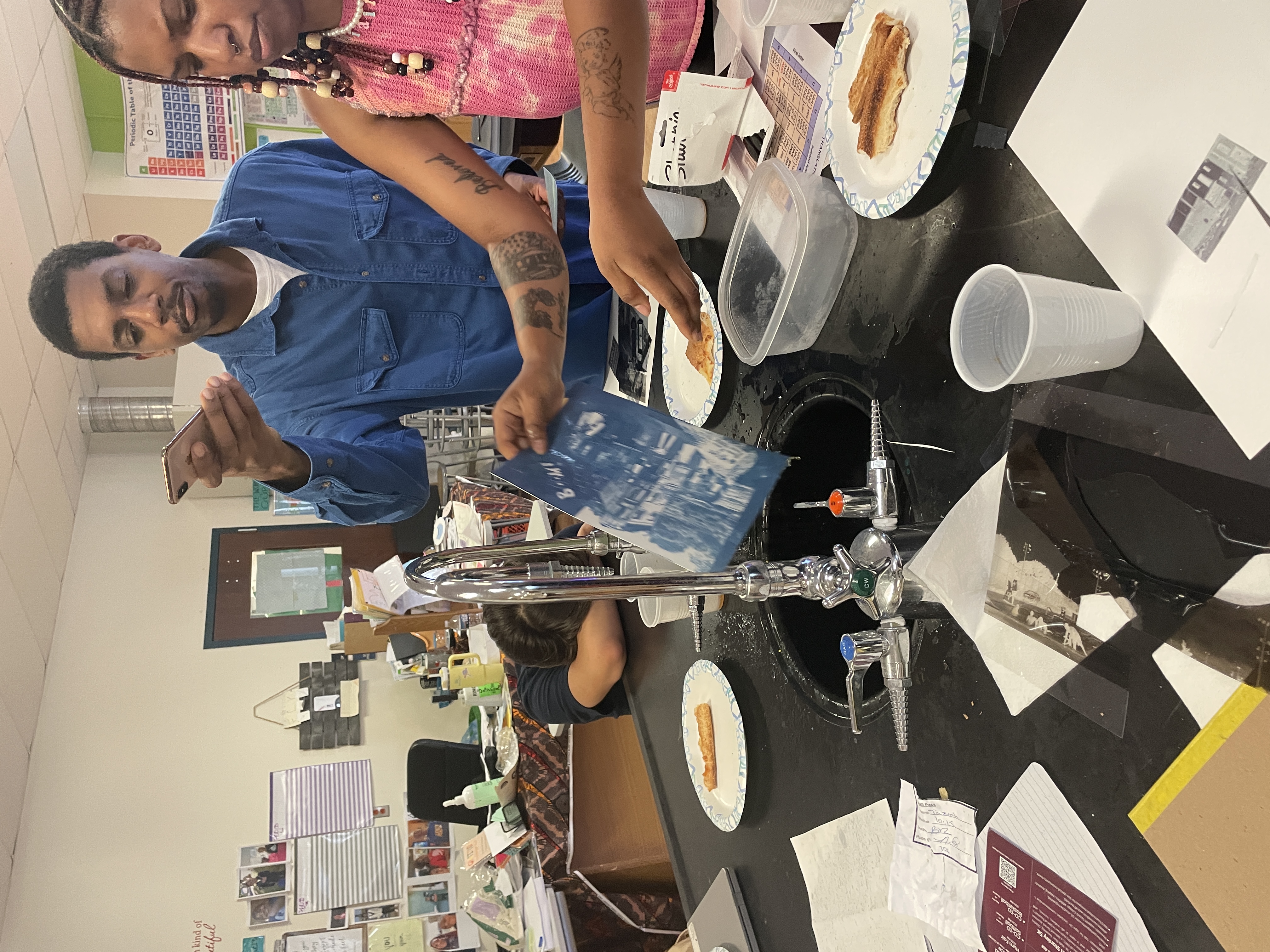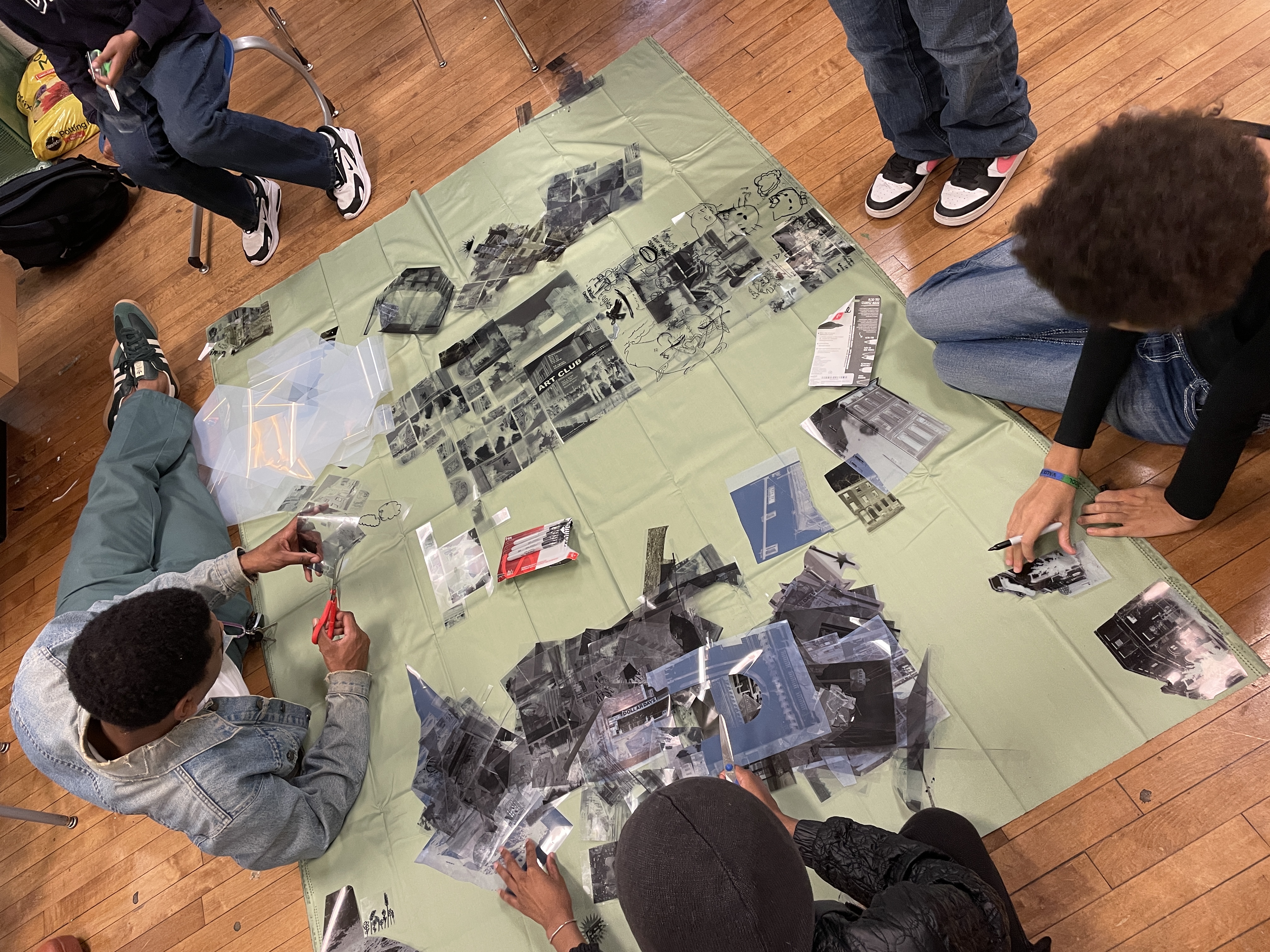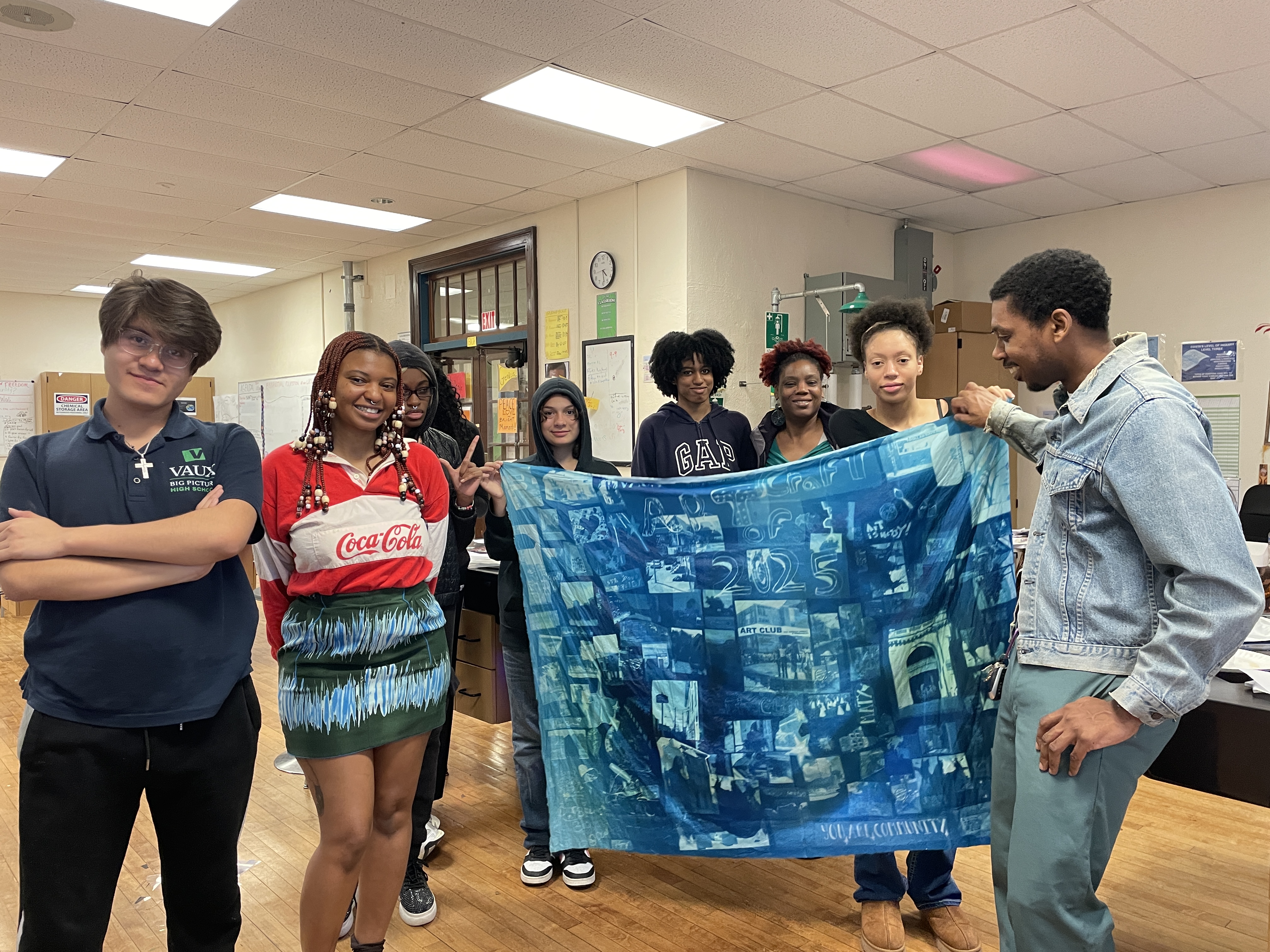Art Club with Yannick Lowery & Qiaira Riley
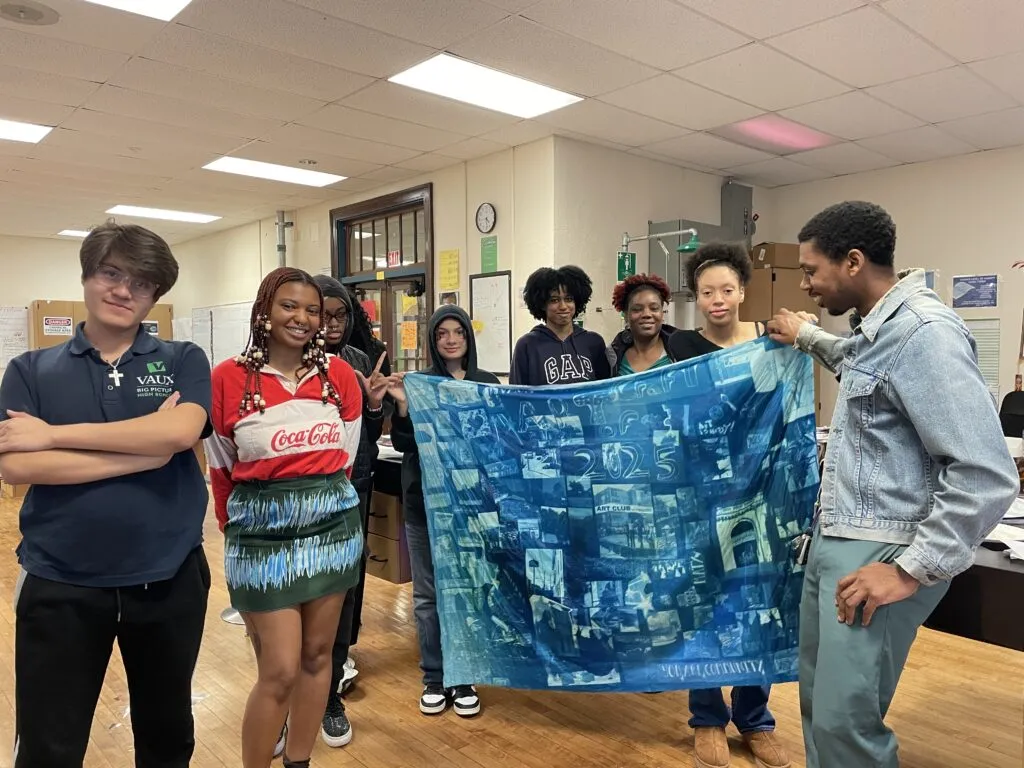
In the Spring of 2025, I started hosting a series of cyanotype workshops exploring the complicated history of The Black Bottom neighborhood of West Philadelphia. The series aimed to educate residents of what is now commonly known as University City about the historic displacement of this community. Using archival imagery of the landscape and interviews with neighborhood residents, these intergenerational workshops sparked several meaningful discussions about displacement, home, gentrification, and redlining. They also offered nostalgic accounts of what was lost and insights on how it can be preserved. The plan was always to continue these workshops in different settings to raise awareness of how the city of Philadelphia has historically and systematically destroyed communities in the name of progress.
I was surprised by how well the series was received and the number of institutions that were interested in these workshops, even institutions who played a role in the attempted erasure of these communities. When Mural Arts reached out about sharing this concept with high school students in the Sharswood/Blumberg neighborhood, I was relieved to see an organization interested in acknowledging and highlighting the history of the city. As an artist, I’ve always tried to be aware of the underlining messaging of my work, particularly when working within institutions. Artist’s can often be expected to translate or soften harsh realities into something more palatable and I’ve struggled with this compromise.
The Sharswood/Blumberg neighborhood has a rich history that has seen significant changes under the PHA in recent years. In 2016 the Philadelphia Housing Authority demolished the Blumberg Apartments’ two 18-story family housing towers. Condemnation notices for more than 1,300 structures in the greater Sharswood neighborhood were sent out in 2015, and demolitions began shortly after. The PHA refused to complete a federally mandated Section 106 review of historic structures in the project area before issuing demolition orders. Some occupied properties were wrongly classified by the PHA as vacant. Residents impacted by demolitions complained of rodent infestations as pests fled demolished buildings, as well as dust and vibrations from demolition and construction on adjacent parcels. Some residents also said that they were not given fair compensation for their properties seized through eminent domain.The owners of most of the homes seized by the PHA through eminent domain in 2015 did not receive compensation for several years. Many of the properties were appraised by the PHA at values thousands of dollars lower than the city’s tax assessment valuation. To make way for construction, 500 families were relocated from the Blumberg apartments and 800 private properties were seized by eminent domain. Many historic buildings were lost. In 2019, the PHA opened a new $45 million headquarters at 2013 Ridge Avenue. Shortly after the new headquarters opened, dissatisfied PHA tenants, neighborhood residents, and others adversely affected by the housing crisis launched #OccupyPHA, a sustained protest outside the Ridge Avenue headquarters. Protestors remained encamped outside the headquarters for five months before disbanding.
These conditions are strikingly similar to what happened in The Black Bottom neighborhood and I took this opportunity at Vaux in an attempt to draw those parallels and to restore memory. I really wasn’t even sure if high school students would find this history relevant to the changes happening in their community today. I typically work with adults tackling heavier themes so this was a bit of a stretch for me as an educator. I brought in my longtime collaborator and fellow artist, Qiaira Riley, to assist with the classes because she’s incredibly talented and has experience with this age group.
This blog will be a collaborative effort between both of us, sharing our experiences with the students at Vaux Big Picture School.
– Yannick Lowery
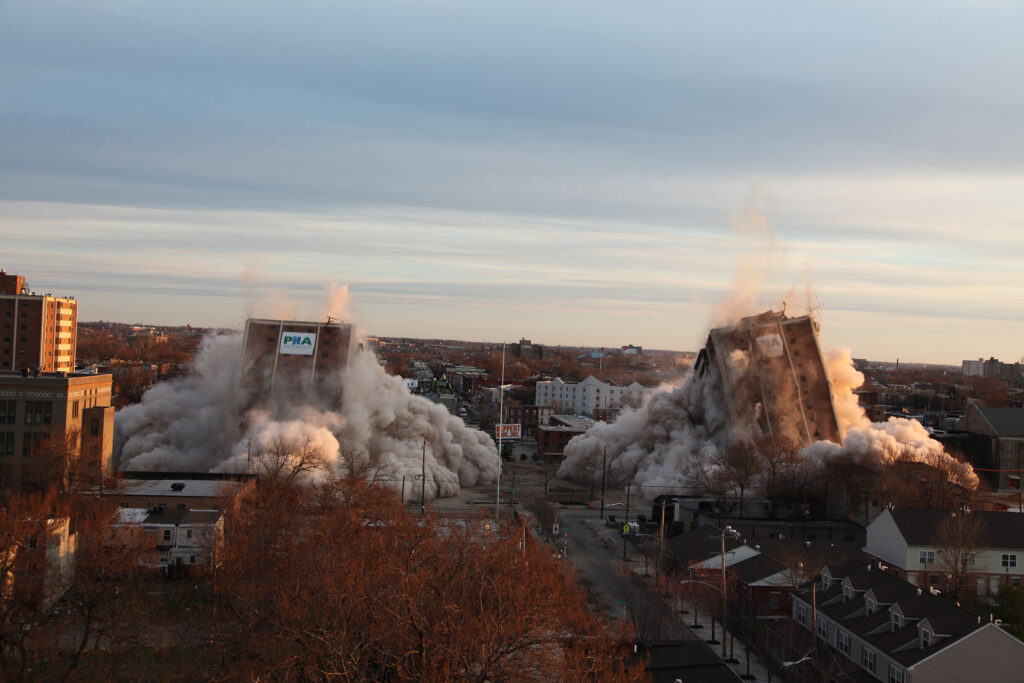
Hello, my name is Qiaira Riley, and I am an interdisciplinary artist, educator, and cultural worker, creating in Philadelphia. I work in various mediums but have been engaging with cyanotypes for the past six years. As the exposure process can often be done outside, I was immediately attracted to the possibility of public and community-centered cyanotype activations. I’ve always associated the prints’ shade of blue with notions of nostalgia and memory, so I began teaching workshops around Philadelphia in 2023, exploring these themes. Using archival imagery of Black American ephemera, I invited participants to explore our collective and individual relationship to material culture through this alternative photography process. Yannick was an early participant of one of these workshops, who quickly and ecstatically grasped this sometimes fickle medium. We bonded over our love for that beautiful shade of cyan and soon began collaborating on various socially engaged projects. In our collaborations, we’ve primarily worked with adults exploring more mature social topics, so I was pretty excited when Yannick tapped me for this collaboration with Mural Arts. As a youth organizer, I have a background in collaborating with young people to discuss issues of injustice, but do not always get to mesh this with my artistic endeavors. I feel it is essential to expose young people to culturally relevant creative experiences as often as possible, so I thought this would be a fantastic opportunity to do so. Upon learning more about the project and the Sharswood community, I developed a deep sense of respect for the neighborhood’s past and current residents. Understanding that this community is currently experiencing the aftermath of gentrification and alleged urban renewal, I pondered the roles of an institution like Mural Arts and our role as artists. How can we utilize these workshops not only to remember how Sharswood was, but also to dictate what the future can hold for its current residents? Ultimately, Yannick and I hoped that this exploration of cyanotypes would be both a creative experiment and a way to proclaim that this community has a deeply rooted past and is worthy of a bright future.
– Qiaira Riley
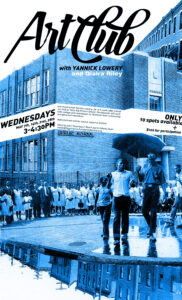 Our flyer was, of course, a cyanotype.
Our flyer was, of course, a cyanotype.
We held four classes. Although all classes focused on a specific art activity, our goal was to incorporate details about the neighborhood’s history, PHA, eminent domain, and to gauge the students’ thoughts on the community and its recent changes.
In the first class, we introduced ourselves, worked independently, and discussed the collaborative work we’ve done through a slide presentation. Then, we discussed the history of the Sharswood neighborhood and allowed the students time to share their personal connection to the neighborhood.
Here are a few questions we asked.
-What are your earliest memories of the neighborhood?
-What are your favorite places?
-How do you feel about the changes you see in your neighborhood?
Some students were surprisingly responsive and gave incredible accounts of their experiences-others said nothing at all.
For the first art activity, we focused on collage using historic and contemporary Sharswood imagery, and I shared techniques for dynamic compositions through a brief presentation. The students arranged their own compositions, drawn from prompts related to home and community, and the work was quite impressive.
In our second class, we introduced the students to cyanotypes. We originally planned to create transparencies out of the collages they made the previous week, but then decided to simply print additional images of the neighborhood for them to create new configurations. We used pretreated cyanotype paper and a scrappy exposure unit.
Our third class was very “experimental.” We wanted to lean into the chemistry class setting and create our own cyanotype chemicals using beakers and other equipment. The plan was to apply the cyanotype chemical to several materials, including tote bags, ceramic tile, and paper-none of which worked successfully…it was kind of a mess. We discovered that wet exposures don’t work out so well for workshops.
For our 4th and final class, we were determined to make it a success. The goal was to create a large-scale cyanotype that everyone helped make. Using pretreated mural cloth, we used transparency clippings from the previous classes to assemble a new composition. I also created an additional transparency to reveal a collage I had arranged during the class. Both exposures were successful, and the students seemed satisfied.
Partners: Vaux Big Picture School
Funder: PHARE
Project Manager: Sahiti Bonam
